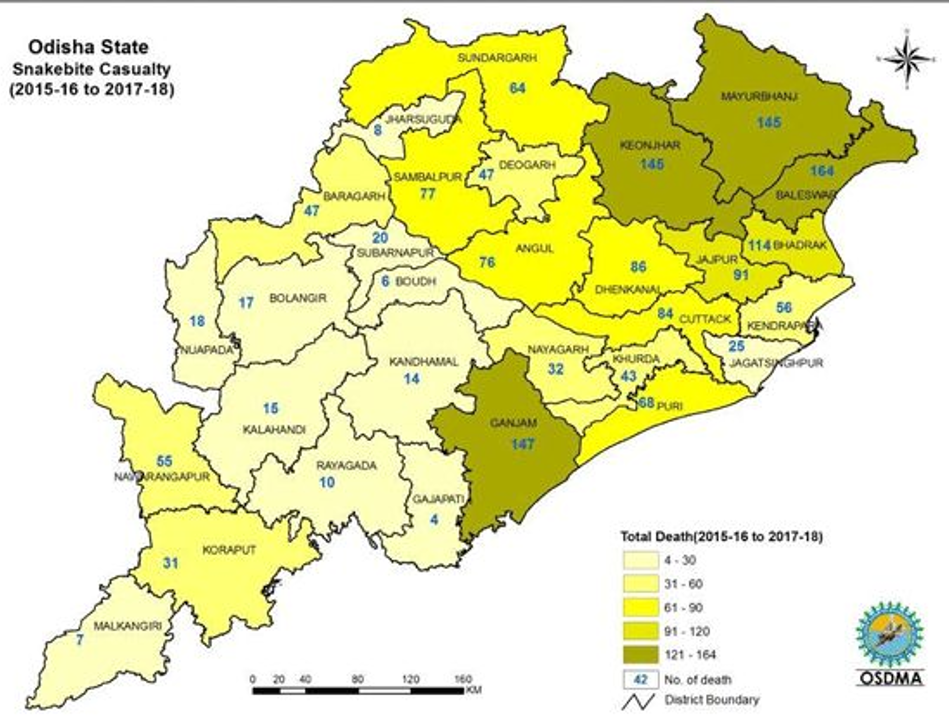

Bite Marks
Although venomous snakes have 2 fangs, but not always you will find 2 puncture marks at the bitten site. The difference in bite marks can be from minor scartch to multiple fang marks. This is because the elapids (Cobras, Krats, King Cobra, etc.) generally have a chewing bite, whereas the vipers have a stab and release bite.
We have collected different types of bite marks from single fang maek to very wide 2 fang mark; from fainted/invisible marks to scratch mark. We hope these can be helpful for doctors as well as common public.
Snake bite Deaths in Odisha
A total of 2954 snakebite deaths were reported in Odisha during the last 5 years. (Source- The New Indian Express dt. 18 August 2019)
Year
2019-20 (Four months)
2018-19
2017-18
2016-17
2015-16
Number of deaths
237
811
823
605
478

To know more about identification of offending snakes from the bite marks these articles can be helpful.
- Feola et. al. 2020. Snakebite Envenoming a Challenging Diagnosis for the Forensic Pathologist: A Systematic Review. Toxins (Basel).;12(11):699. doi:10.3390/toxins12110699
- Nishioka et al. 1995. Bite marks are useful for the differential diagnosis of snakebite in Brazil. Wilderness Environ Med.; 6(2): 183-188. doi: 10.1580/10806032(1995)006[
0183:bmauft]2.3.co;2 - Mehta & Sashindran. 2002. Clinical Features and Management of Snake Bite. Medical journal, Armed Forces India, 58(3), 247–249. doi: 10.1016/S0377-1237(02)80140-X
- Pucca et al. 2020. Current Knowledge on Snake Dry Bites. Toxins (Basel) 22;12(11):668. doi: 10.3390/toxins12110668.
- Theakston & Laing. 2014. Diagnosis of snakebite and the importance of immunological tests in venom research. Toxins, 6(5), 1667–1695. Htt ps://doi.org/10.3390/
toxins6051667 - Silva et al. 2019. Non-venomous snakebites in the Western Brazilian Amazon. Revista da Sociedade Brasileira de Medicina Tropical, 52, e20190120. https://doi.org/10.1590/0037-
8682-0120-2019 - Viravan et al. 1992. A national hospital-based survey of snakes responsible for bites in Thailand. Trans R Soc Trop Med Hyg.; 86(1):100-6. doi: 10.1016/0035-9203(92)90463-m.





